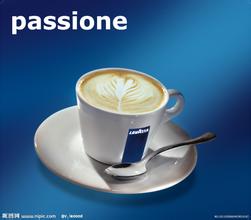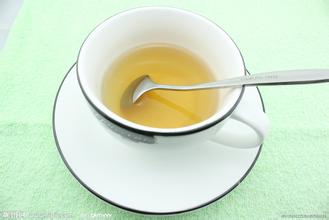Introduction to the demand of planting Environment and Weather conditions of Coffee trees; introduction of domestic coffee Yunnan and Hainan
Introduction to the planting conditions and environment of coffee trees
There is no difference in yield between north-south and east-west coffee trees. This is the orange fruit obtained by the Coffee Institute of Chulvado in a test lung. The trial material is a rejuvenated coffee tree. It is said that the coffee trees that plant in the east-west direction seem to grow more vigorously than those in the north-south direction six months after they are cut off and pull out new branches, but by the second apple, this advantage has disappeared. When they were young, the plant growth in the north-south direction was poor at first because it was sheltered by the nearby unpruned coffee trees, resulting in less exposure. In the same study, the effects of the number of direct dried stems on coffee yield were also compared. It was observed that the plants with 3-5 channels of dust drying were indeed higher than those of plantations with only 1 or 2 tracks. The planting distance of the second area is 3 x 3 Yan and the algal shielding degree is 5. One 60%. All treatments were treated with 1 pound of 13-13-13 formula fertilizer per year. (Direetion of Coffee Rows Ha. O Influenee on Yield,' Coffee Aud Ca- ca . Journal ", Vol.6, plus 9 department Nov., 1963. Zhan Shu skirt choice) the direction of coffee tree planting has no effect on the yield @ Tang Shu Yan north-south direction and east-west direction of coffee trees, there is no difference in yield
From harvest to delivery
After the fruit is harvested, the skin and flesh must be removed. The endocarp and silver peel are removed to form coffee beans. There are two kinds of methods: drying (natural drying, non-washing) and washing.
Dry type, the operation is relatively simple, the harvested fruit will be spread on the dry ground and basked in the sun for a week or two. The sound of rattling can be heard when it is turned, which means it is dry. Then use the sheller to remove the pulp, endocarp and silver skin of the dried fruit.
This method gives coffee beans a soft sour taste and a mild bitter taste. This method is used in Brazil, Ethiopia, Yemen and other places. Disadvantages: vulnerable to weather, defective beans and foreign bodies are more likely to mix. Therefore, it is necessary to select it carefully before delivery.
In the washing type, the harvested fruit is poured into the sink, the floating matter is removed, the fruit in the water is moved to the pulp removal machine, the skin and pulp are removed, and then put back into the tank to remove the floating matter, the "core" in the water is poured into the fermentation tank, soaked for half a day or one day, the colloid on the surface of the fermented bean is removed, washed, dried or mechanically dried, and the endocarp is removed on the peeling machine to become commercial raw coffee beans.
The advantages of washing type: coffee beans have good luster, less foreign bodies, and slightly better sour taste. Colombia, Mexico, Guatemala and other countries have adopted this method. Coffee beans produced by washing account for almost 70% of the total output of coffee beans.
Sometimes poor treatment of fermentation time will produce fermentation odor and special sour taste; if handled well, it can form the personalized aroma of coffee beans. At this time, the coffee beans can be sent to various places in sacks or in special containers.

Important Notice :
前街咖啡 FrontStreet Coffee has moved to new addredd:
FrontStreet Coffee Address: 315,Donghua East Road,GuangZhou
Tel:020 38364473
- Prev

About what you need to put in after baking and how many geniuses to drink.-how many days is the best time to grow beans?
Coffee roasted beans recently introduced to take a coffee bean, try to peel off with your hands, if the coffee beans are fresh enough, it should be easy to pull away, and there will be a crisp sound and feeling. If the coffee beans are not fresh, you will find that it seems to take a lot of effort to get rid of a bean. There is another important point to observe when peeling off the coffee beans, that is, you can look at the roasting.
- Next

How to make coffee by hand and how to make it taste good
1. Before steaming, make sure the coffee powder is as horizontal as possible in the filter screen or filter paper. 2. When steaming, the force of water injection is not too strong, gently. 3. The best amount of water for steaming is 10% of the total water. In the case of 240ml coffee, the amount of water required for steaming is about 2430 ml. 4. in the process of steaming, there is as little extract as possible, when there is too much in the pot.
Related
- Beginners will see the "Coffee pull flower" guide!
- What is the difference between ice blog purified milk and ordinary milk coffee?
- Why is the Philippines the largest producer of crops in Liberia?
- For coffee extraction, should the fine powder be retained?
- How does extracted espresso fill pressed powder? How much strength does it take to press the powder?
- How to make jasmine cold extract coffee? Is the jasmine + latte good?
- Will this little toy really make the coffee taste better? How does Lily Drip affect coffee extraction?
- Will the action of slapping the filter cup also affect coffee extraction?
- What's the difference between powder-to-water ratio and powder-to-liquid ratio?
- What is the Ethiopian local species? What does it have to do with Heirloom native species?

